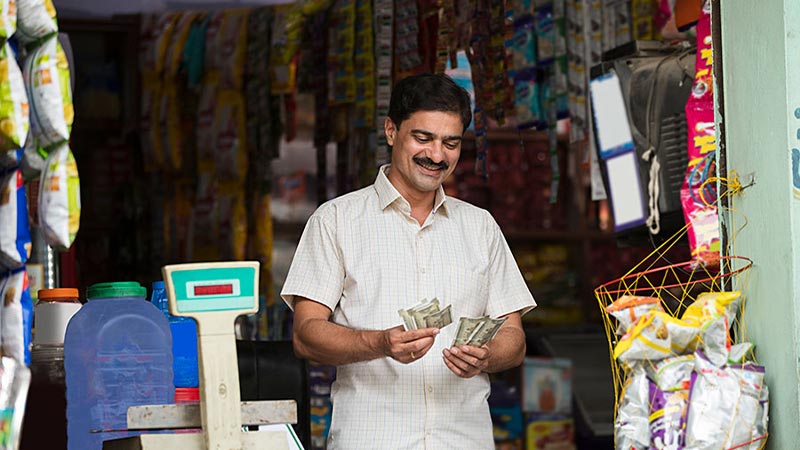GET IN TOUCH
- Please wait...

Micro and Small Enterprises (MSEs) play a pivotal role in Bangladesh’s economy by generating almost 25% of GDP and half of the total employment in the country. According to the Bangladesh Bureau of Statistics (BBS) Economic Census 2013, there are 7.81 million business entities in Bangladesh among which 88% are recognized as micro and cottage enterprises, constituting nearly 75% of non-agricultural employment.
As the Micro Enterprises (MEs) borrowing from MFIs is increasing, a streamlined guideline for MFI is imperative, especially given that top MFIs have as high as 40% of their total loan portfolio invested in MEs. BFP-B presented this recommendation to MRA (Microcredit Regulatory Authority) with the justification for adopting ME policy guidelines for MFIs. MRA Board has agreed with the justification and accepted the technical assistance proposal prepared by BFP-B to develop ME guidelines for MFIs. LightCastle Partners Limited was hired to conduct a policy guideline study to assess the ME Lending process by MFIs and suggest the ME loan definition & recommendations to MRA.
Based on our understanding of the industry we proposed a three-step process for the research.
Step 1: Secondary research; Global best practice analysis; Data Capture Instrument; Hypotheses Building, Preli-expert interviews, Bullet 2-hour Kick-off workshop with BFP-B and MRA
Step 2: Conduct organizational in-depth interviews and consultations to collect data; organize Focus Group Discussions (FGDs) with MFIs, prepare consultation and FGD summary reports and share it with BFP-B and MRA for preliminary feedback.
Step 3: Data Analysis, prepare a draft of the ME lending guideline with rationale and justification in the annex and share the draft guideline with BFP-B and MRA.
Step-4: Finalize the ME lending guideline in English and Bangla based on comments of MRA and BFP-B.
The loan floor and ceiling for ME should be readjusted: The loan floor of BDT 50 thousand and the ceiling of BDT 10 lacs were introduced by PKSF back in 2010. It is noted that the partner organizations (POs) of PKSF were the first ones to start using the definition adopted by PKSF. As the country’s GDP rises, the demand for average loan size is increasing, and based on inflation, the loan floor and ceiling should be adjusted.
Based on industry insight and inflation trends, it is recommended the loan floor be re-adjusted to BDT 1 lac and the loan ceiling to BDT 40 lacs. However, MFIs may sanction loan disbursement above the ceiling based upon the internal approval of the highest authority in the organization. Based on the need and scenario, the ME Lending Guideline may be revised every 2 years.
There should be a separate process, procedure, and structure for microenterprise and microfinance programs in the organization: From our primary consultation, we found a direct correlation between the performance of teams with dual responsibility compared to separate teams for microenterprise and microfinance. One of the prime examples is BRAC which has separate departments for both microfinance and microenterprise. Another example is Sajida Foundation which has experienced fewer errors at the field level. According to the discussion with MFIs by assigning separate teams for micro-credit and micro-finance the organizations saw a significant efficiency improvement on
ME Portfolio cap should be relaxed from 50% to 60%: While the total ME loan to total portfolio ratio stood at 37% in 2017, their proportion to the total portfolio is rising fast. According to MRA NGO-MFIs in Bangladesh in June 2017, a total of BDT 261.5 billion worth of ME loans were disbursed by the MFIs in 2016-17, which was 36% higher than the previous year. Some of the top MFIs have already crossed the ratio due to micro-credit graduation and lateral entry. As the country’s GDP rises at 7.3% with a target to reach a 10% growth rate, more focus should be prioritized to micro-entrepreneurs for employment generation and institutional financial inclusion.
A projection calculation between MFI loans with a CAGR of 24% compared to total ME loan disbursement growth of 40% (growth of 2016-17 was 47%. Source: MRA NGO-MFIs in Bangladesh) shows the proportion of ME will reach 50% by 2021. Hence, the suggestion to relax the ME portfolio proportion from 50% to 60%.
The guideline aims to cater a proper definition of MEs and a unified ME lending process for all MFIs regulated by MRA in the light of National Industrial Policy 2016, SME guidelines of Bangladesh Bank, and the Microfinance context of Bangladesh.
After the approval of MRA and Bangladesh Bank, the policy guideline would work as a yardstick for MFIs while giving loans to MEs. Moreover, it will help the MRA to improve the regulation of the MFIs.
Our experts can help you solve your unique challenges